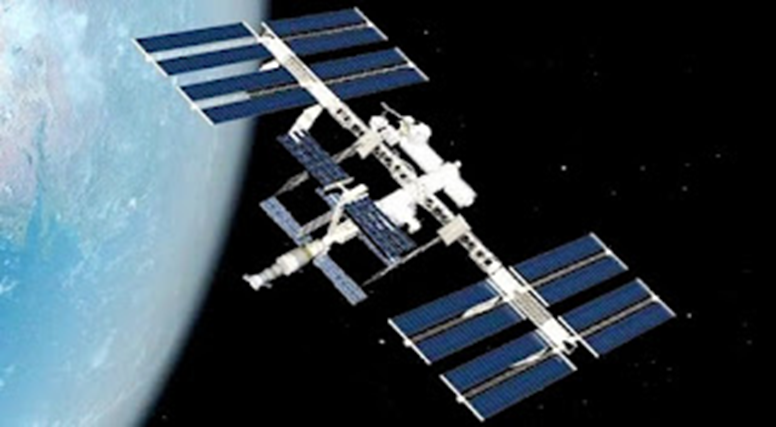Amazing facts and secrets about the International Space Station
International Space Station
?What do you know about the International Space Station
We all know that the International Space Station (ISS) revolves around the planet Earth very quickly at an altitude of more than 300 kilometers, and it is a place inhabited by humans for more than 20 years, and some may have heard that there are scientific experiments or some important repairs that are being carried out on the space station International, but for the average person, it's amazing!
We are here to highlight this technological marvel that has nearly acres of solar panels powering the station with some of the best facts. Here are 10 amazing facts and secrets about the International Space Station
International Space Station ISS:
The International Space Station ISS is an acronym for *International Space Station*

International Space Station
The construction of the International Space Station began in 1998 at a cost of 100 billion euros, and it is one of the most expensive man-made things in history so far.
The International Space Station was launched for the first time on November 20, 1998, and thus it has been about 24 years since its launch.
The International Space Station includes at least four laboratories that contain instruments to conduct large-scale research in various fields such as materials, fluids, life sciences, combustion and new technologies, and to look deeply into the stars.
The International Space Station is located at an altitude of approximately 390 km from the surface of the Earth and rotates at a speed of 28 thousand km per hour.
The length of the International Space Station is 72.8 meters, while the width of the space station is 108.5 meters, the height is 20 meters, and the volume is 916 cubic meters.
As of August 2021, 244 astronauts and space tourists from 19 different countries have visited the International Space Station, many of whom are repeat visitors, and these people are: 153 Americans, 50 Russians, 9 Japanese, 8 Canadians, 5 Italians, 4 French, 3 Germans, and 1 Brazilian
The International Space Station was designed to take the place and tasks of the Russian space station Mir, and it is supervised by international cooperation.
Its goal is to prepare people to spend long periods of time in space, and to conduct experiments outside the Earth's gravitational zone.
The International Space Station was built under international cooperation led by the United States of America and Russia and funded by Canada, Japan and 10 European countries.
Space station design, development, operation and uses. It is being carried out by 5 space agencies representing 16 countries, representatives of the United States, Russia, Japan, Canada and the member states of the European Space Agency, namely Belgium, Denmark, France, Germany, Italy, the Netherlands, Norway, Spain, Sweden, Switzerland and Britain.
Incredible facts about the International Space Station:
Astronauts can see the sun rise and set sixteen times in 24 hours aboard the International Space Station.
Actual assembly began in 1998 when the first module, the Russian-made Zarya, was launched on a Russian Proton rocket, while all remaining modules were flown to the International Space Station by NASA's space shuttles.
The first crew to live aboard the International Space Station were shipped aboard the Russian-made Soyuz TM-31 spacecraft as Expedition 1 in November 2000.
The first flight's three-person crew consisted of two cosmonauts, Yuri Gidzenko and Sergey Krikalev Alrusin, and an American astronaut, Bill Shepard, who was the mission commander.
All three had quite a bit of space experience already, as Krikalev had already spent a full year in space aboard the Soviet space station MIR.
By 2011, the space station had assembled more than 150 different components and fourteen pressurized modules, with astronauts spending more than 1,000 hours in space, connecting all the pieces.
Astronauts aboard the International Space Station have to do intense daily exercises and it is interesting that living in space is not good for the human body.
One of the most important is the near-total absence of gravity, which can cause astronauts' bones to lose density and their muscles to slowly fade away, so they should exercise regularly, as this can help prevent these issues.
Crews aboard the International Space Station can see 16 sunrises and sunsets in 24 hours.
This happens because the International Space Station orbits the Earth once every 1.5 hours. As you can imagine, this can wreak havoc on astronauts' sleep schedules.
Because of microgravity on the International Space Station, astronauts can't lie in bed, instead, they sleep in sleeping bags attached to the walls of the crew cabin—small compartments large enough to fit a person inside.
Most of the research conducted aboard the International Space Station focuses on living in space.
When astronauts aren't sleeping, eating, or resting, they're conducting advanced science experiments.
Experiments include trying to grow plants in microgravity, testing how well microbes survive in space, and studying how space affects DNA.
Some of the International Space Station's instruments are designed to look out into the universe to better understand what's going on.
One instrument, NICER, studies the densest objects in the universe, neutron stars. Alpha magnetic spectrometers, on the other hand, are used to try to capture and analyze cosmic rays, which are some of the fundamental components of the universe. This, in turn, is used by physicists to try to learn more about the origins of the universe.
The International Space Station is probably the most expensive thing ever built.
By 2010, the total cost had already reached $150 billion, with the United States contributing $58.7 billion, $12 billion from Russia, $5 billion from Japan and Europe, and $2 billion from Canada.

Pictures of country lights from the International Space Station
Note: You can see the International Space Station with the naked eye every day from Earth, and there are programs to locate it.
Source: websites

